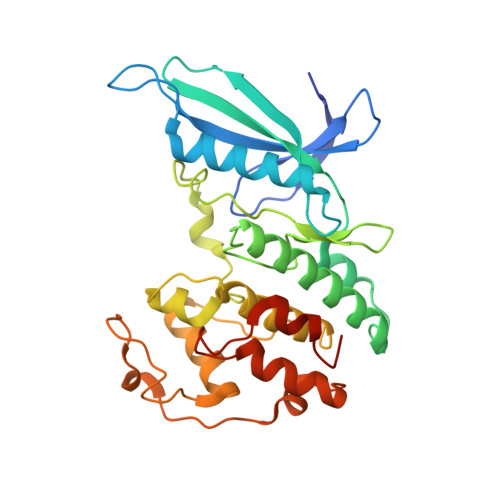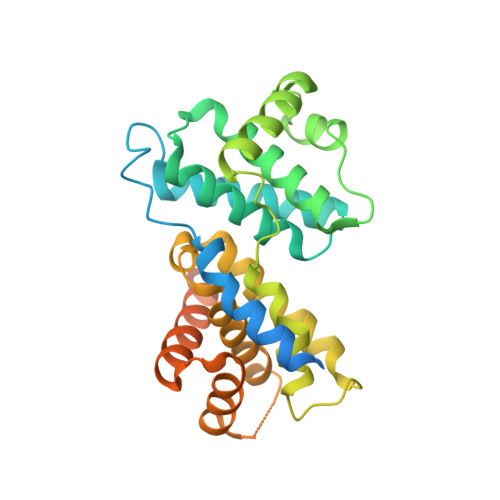The structure of CDK4/cyclin D3 has implications for models of CDK activation.
Takaki, T., Echalier, A., Brown, N.R., Hunt, T., Endicott, J.A., Noble, M.E.(2009) Proc Natl Acad Sci U S A 106: 4171-4176
- PubMed: 19237555
- DOI: https://doi.org/10.1073/pnas.0809674106
- Primary Citation of Related Structures:
3G33 - PubMed Abstract:
Cyclin-dependent kinase 4 (CDK4)/cyclin D complexes are expressed early in the G(1) phase of the cell cycle and stimulate the expression of genes required for G(1) progression by phosphorylation of the product of the retinoblastoma gene, pRb. To elaborate the molecular pathway of CDK4 activation and substrate selection we have determined the structure of nonphosphorylated CDK4/cyclin D3. This structure of an authentic CDK/cyclin complex shows that cyclin binding may not be sufficient to drive the CDK active site toward an active conformation. Phosphorylated CDK4/cyclin D3 is active as a pRb kinase and is susceptible to inhibition by p27(Kip1). Unlike CDK2/cyclin A, CDK4/cyclin D3 can be inactivated by treatment with lambda-phosphatase, implying that phosphorylated T172 is accessible to a generic phosphatase while bound to a cyclin. Taken together, these results suggest that the structural mechanism of CDK4/cyclin D3 activation differs markedly from that of previously studied CDK/cyclin complexes.
- Cell Cycle Control Laboratory, Clare Hall Laboratories, London Research Institute, Blanche Lane, South Mimms, Herts EN6 3LD, United Kingdom.
Organizational Affiliation:

















